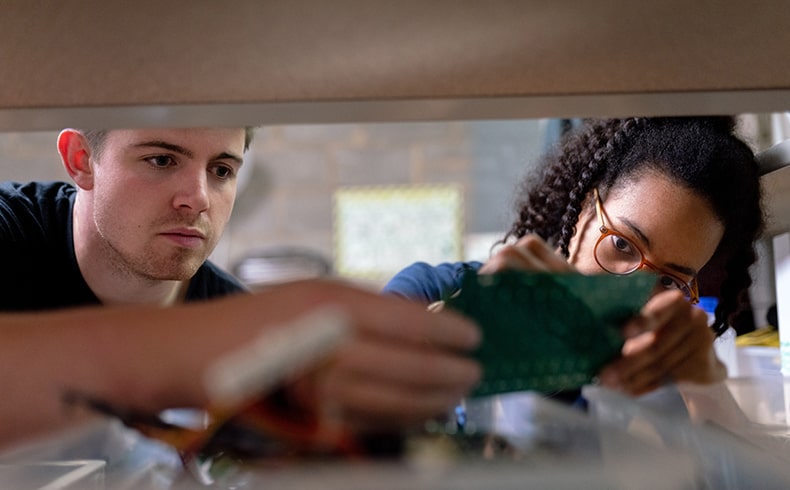PEM Technology Gateway at IT Sligo is delighted to have been recently successful in attaining capital equipment funding from Enterprise Ireland to purchase a Materials testing equipment suite which will hugely benefit Irish Industries.
The Suite includes:
- A Gas Displacement Pycnometer – This instrument will be used to determine the true volume and true density of solids and powders.
- A Universal Hardness Testing System – An automatic desktop Universal Hardness Testing Machine capable of performing a wide range of test forces (up to 250kgf) on different hardness scales including Vickers, Rockwell, Brinell and Knoop.
- A Micro Hardness Tester – This Instrument will be used to execute Micro Vickers & Knoop Hardness for values within the load range from 10gf to 2kgf. Availability of this equipment would expand our capacity to determine a material’s hardness or resistance to penetration when test samples are exceedingly small or thin, or when small regions in a composite sample or plating need to be measured.
- A low force benchtop tensile tester – This Instrument will be used to execute low-force Tensile Testing on small components and assemblies, for example, testing of small medical devices which would be very useful given all the medical device manufacturers in the region.
This new suite of equipment will complement the 600kN Tensile tester we received funding for last year, the device will enable companies to test the strength of multiple materials.
PEM will be pleased to offer tensile testing services in the 400-600kN capabilities to Industry. The high capacity universal tensile testing machine will be capable of performing tensile and compression testing, as well as shear, flexure, peel, tear, cyclic and bend tests. The addition of this equipment to the PEM Gateway provides a unique service offering to enable Ireland’s heavy industry in specialist areas, such as:
- Construction equipment
- Heavy equipment
- Automotive & Aerospace
- Agricultural machinery
Should you have any questions about testing capabilities or if you would like any further information contact the team at PEM.
This article was first published on the PEM website
